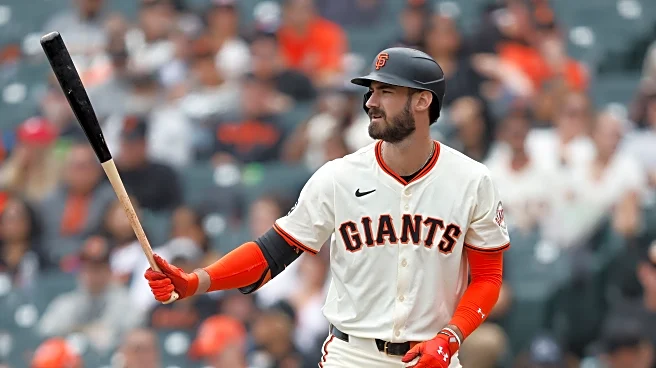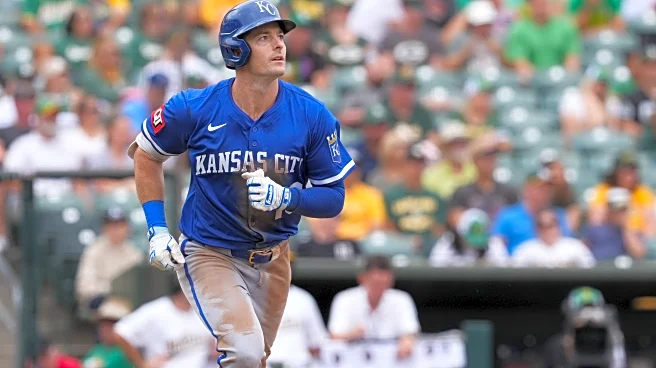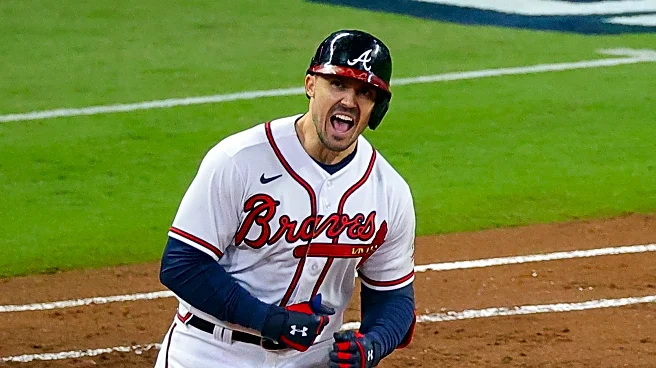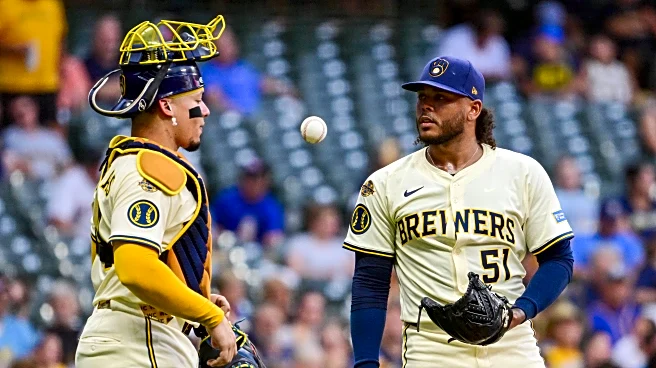What's Happening?
Following their elimination from the 2025 MLB postseason, the Milwaukee Brewers are reportedly considering trade offers for their star pitcher, Freddy Peralta. Peralta, who has been a cornerstone of the Brewers' rotation, is under contract until the end
of the 2026 season. He is coming off a stellar year, having achieved one of the lowest ERAs in the National League and surpassing 200 strikeouts for the third consecutive season. Despite his value to the team, the Brewers are known for their strategy of retooling their roster by trading valuable assets, which has led to speculation about Peralta's future with the team.
Why It's Important?
The potential trade of Freddy Peralta could significantly impact the Brewers' strategy and performance in upcoming seasons. As one of the most effective pitchers in the league, his departure would leave a substantial gap in the team's rotation. However, trading Peralta could also provide the Brewers with opportunities to acquire new talent and strengthen other areas of their roster. For other teams, acquiring Peralta would be a major boost, especially given his team-friendly contract and recent performance. The San Francisco Giants are among the teams that could benefit from such a trade, potentially enhancing their pitching lineup.
What's Next?
If the Brewers decide to trade Freddy Peralta, it could set off a series of moves in the MLB offseason, with teams vying for his services. The Brewers will likely evaluate offers based on their long-term strategy and the potential to improve their overall roster. Other teams, particularly those in need of pitching strength, will closely monitor the situation, potentially leading to competitive bidding. The outcome of these negotiations could reshape team dynamics and influence the competitive landscape of the league in the coming seasons.
Beyond the Headlines
The decision to trade a player like Freddy Peralta highlights the Brewers' unique approach to team management, focusing on asset optimization rather than maintaining a stable roster. This strategy, while effective in some respects, raises questions about team loyalty and the impact on player morale. Additionally, it underscores the financial considerations that drive decisions in professional sports, where contracts and player value are constantly assessed against team performance and future prospects.














